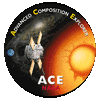

Shocks driven by fast coronal mass ejections (CMEs) are now generally recognized as the cause of so-called "gradual" solar particle events (SPEs), in which greatly enhanced energetic particle fluxes persist for days throughout much of the inner heliosphere. The key role of CME-driven shocks constitutes a 'new paradigm', which is now shaping our ideas about the underlying physics, our plans for new research initiatives, and our models for evaluating and predicting the radiation hazards which these events pose to space-based systems and manned spaceflight. However, many aspects of this new paradigm are only vaguely understood at present. Among these details are (1) the interplay between an inhomogeneous, spatially-extended, and temporally-evolving accelerator and subsequent interplanetary transport, (2) the source plasma(s) from which the energetic particles are selected [Boberg et al. 1996], and (3) the origins of both event-to-event variability and intra-event variability. Of particular interest in this regard are enhanced Fe/O ratios, which have been observed at high energies [Tylka et al. 1997] and in cases in which ionic charge state measurements are apparently inconsistent with a flare-origin for the Fe [Tylka et al. 1995].
We propose to examine these issues by analyzing the temporal evolution of SEP elemental fluxes and relative abundances in gradual SPEs. In order to carry out such studies over a broad range of energies and species, we propose to combine energetic particle data from the EPACT experiment on WIND and from the SIS and ULEIS experiments on ACE. We further propose to correlate these results with what may be inferred about the CME and shock characteristics from LASCO coronagraph observations on SOHO. We also propose to correlate the energetic particle results with related observations of solar wind speed, magnetic fields, and flares from various satellites. Finally, we propose to examine our conclusions in light of other unique observations from ACE, such as energetic particle charge states, isotopic abundances, and solar-wind and suprathermal heavy-ion characteristics.
References:
Boberg, P.R, Tylka, A.J., & Adams, J.H. Jr., Ap.J. Lett 471, L65 (1996).
Tylka, A.J. et al., Ap.J. Lett 444, L109 (1995).
Tylka, A.J., Dietrich, W.F, & Boberg, P.R., Proc. 25th ICRC, 1, 101 (1997).
Our Email Address: asc@srl.caltech.edu